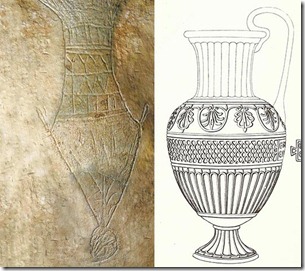Gordon Franz was at today’s press conference and has written a short piece on the experience and his amazement at some of the responses he has read. He writes:
I was at the press conference at Discovery Times Square on Tuesday, February 28, 2012 for the unveiling of the new book The Jesus Discovery by James Tabor and Simcha Jacobovici.
I am not a supporter of Simcha’s ideas, in fact, I have critiqued some of them on my website (see the Cracked Pot Archaeology section at www.lifeandland.org). But what I have found amusing is the misstatements and misunderstanding on some of the blogs by leading scholars. First of all, you should get the book and read it before you comment, or at least look at the pictures! It will save you some embarrassment.
Simcha had an exact replica of both ossuaries in question made by the museum staff at Discovery Times Square. This was accomplished by the measurements and photographs taken with the impressive robotic arm. I am grateful for Walter Klassmen for showing me how it worked. This tool will have many applications in the archaeology of Israel and Simcha should be commended for working closely with this expert to produce such a valuable tool.
The first thing that struck me on the ossuary is the orientation of the “fish.” On all the blogs and news articles I have read, the picture of the “fish” is facing the wrong way. Sometimes it is horizontal, either facing left or right, and made to look like a swimming fish. Or the “fish” has the round ball (Jonah, according to Simcha) facing upwards, thus making the “fish” look like a funerary monument.
Usually pictures of Absalom’s Pillar are shown to bolster the case for this view. The fact of the matter is that the “fish” is facing down! So we should orient the picture correctly before we continue the discussion.
My initial impression is that the “fish” looks like an ornamental glass vessel, perhaps a pitcher or flask of some sort. The Ennion vessel found by Prof. Avigad in the Jewish Quarter comes to mind (page 108 in Discovering Jerusalem). Perhaps some glass expert might suggest a better parallel from this period than the Ennion vessel, but this is worthy of consideration.

Ossuary etching compared with Ennion pitcher, both from Jerusalem. Left image: Associated Producers Ltd./Haaretz; Right: Avigad, Discovering Jerusalem, p. 108.
